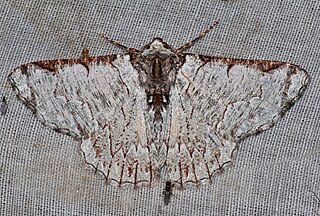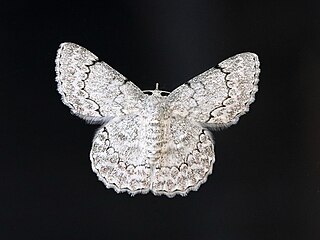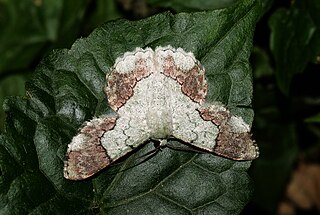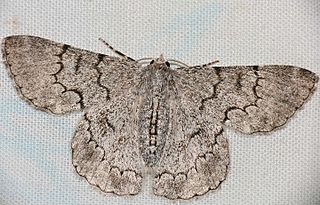
Lophophelma is a genus of moths in the family Geometridae described by Prout in 1912.

Pingasa is a genus of moths in the family Geometridae first described by Frederic Moore in 1887.

Pingasa chlora, the white looper moth or flower-eating caterpillar, is a species of moth of the family Geometridae first described by Caspar Stoll in 1782. It is found Sundaland, the Philippines, Sulawesi and from the Moluccas to Queensland, Australia.

Pingasa rubicunda is a species of moth of the family Geometridae first described by William Warren in 1894. It is found in northern India, Sundaland and the Philippines.

Pingasa ruginaria is a species of moth of the family Geometridae first described by Achille Guenée in 1857. It is found in northern India, south-east Asia, the Ryukyu Islands and Sundaland.

Pingasa hypoleucaria is a species of moth of the family Geometridae first described by Achille Guenée in 1862. It is found on Réunion and Mauritius.
Pingasa abyssiniaria is a moth of the family Geometridae first described by Achille Guenée in 1858. It is found in Ethiopia and South Africa.

Pingasa alba is a moth of the family Geometridae first described by Charles Swinhoe in 1891. It is found in the Chinese provinces of Hubei, Hunan, Guangxi, Zhejiang, Yunnan, Fujian, Guizhou, Jiangxi and Sichuan, and in Taiwan and Japan.

Pingasa angulifera is a moth of the family Geometridae first described by William Warren in 1896. It is found in Queensland, Australia.
Pingasa blanda is a moth of the family Geometridae first described by Arnold Pagenstecher in 1900. It is found on New Guinea, on the Bismarck Archipelago and in Queensland, Australia.
Pingasa pseudoterpnaria is a moth of the family Geometridae first described by Achille Guenée in 1858. It is found in China, Japan and India.
Pingasa cinerea, the tan-spotted grey, is a moth of the family Geometridae. The species was first described by William Warren in 1894. It is found in the Australian states of New South Wales, Queensland, Tasmania and Victoria.
Pingasa dispensata is a moth of the family Geometridae first described by Francis Walker in 1860. It is found in India, Sulawesi and Africa.
Pingasa griveaudi is a moth of the family Geometridae first described by Claude Herbulot in 1966. It is found on the Comoros.
Pingasa lahayei is a moth of the family Geometridae first described by Charles Oberthür in 1887. It is found in Spain, North Africa and tropical Africa, including the Gambia.
Pingasa multispurcata is a moth of the family Geometridae first described by Louis Beethoven Prout in 1913. It is found in Yemen, Arabia, Iraq, from Iran to Pakistan and in north-western India.
Pingasa nigrolineata is a moth of the family Geometridae which is endemic to Cameroon. The species was first described by Timm Karisch in 2006.
Pingasa nobilis is a moth of the family Geometridae first described by Louis Beethoven Prout in 1913. It is found in New Guinea and Queensland, Australia.

Pingasa rhadamaria is a moth of the family Geometridae first described by Achille Guenée in 1858. It is found on the Comoros, Madagascar and São Tomé and Príncipe and in Sierra Leone, South Africa, the Gambia, Zimbabwe, Cameroon, Ghana, Ethiopia, Kenya, Tanzania and Zambia.
Pingasa subpurpurea is a moth of the family Geometridae first described by William Warren in 1897. It is found on Borneo, the Philippines and Sulawesi. The habitat consists of dry heath forests and swamp forests, as well as cultivated areas.







